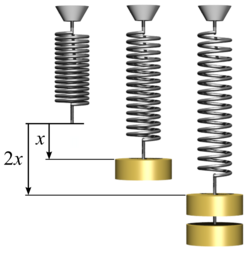Robert Hooke: Difference between revisions
| Line 16: | Line 16: | ||
Robert Hooke used the best tools available while he was doing research. During this time Hooke was using a simple compound microscope. Under it he looked at a vast array of items such as insects, snow, razors, cork, etc. He would then draw what he saw and put it in his book "Micrographia." He could see in vivid detail the hairs on the insects and when looking at the cork he noticed that it had sections he called "cells." The microscope didn't change for over 200 years which kept his book relevant. | Robert Hooke used the best tools available while he was doing research. During this time Hooke was using a simple compound microscope. Under it he looked at a vast array of items such as insects, snow, razors, cork, etc. He would then draw what he saw and put it in his book "Micrographia." He could see in vivid detail the hairs on the insects and when looking at the cork he noticed that it had sections he called "cells." The microscope didn't change for over 200 years which kept his book relevant. | ||
[[File: | [[File:HookeFlea02.png|center|200px|.]] | ||
==Other== | ==Other== | ||
Revision as of 15:07, 29 November 2015
The life and work of Robert Hooke Page claimed by Chris Bauer (cbauer8) on 11/11/2015 - a work in progress
Personal Life
Robert Hooke was born July 18, 1635 in Freshwater, England. Growing up Hooke fell sick very often, and during these times he found his love to paint and build mechanisms. His parents died when he was very young so he moved to London and wend to the Westminster school and later to Oxford University. He worked as an assistant to Robert Boyle, and this helped him learn about a wide range of subjects from Chemistry to Astronomy. He did research in London discovering several influential topics until he died March 3, 1703 at the age of 67. He never married.
Scientific Contributions
Hooke's Law
In 1678 Hooke published a book titled "Lecture's of Springs." The main topic of this book was elasticity and how it can be modeled. Elasticity is the property of an object or material which causes it to be restored to its original shape after distortion. Springs are elastic because they are restored very closely to the original. An inelastic object would be one that doesn't restore to the original well like plastic being broken. Hooke's law states that the restoring force is proportional to the stretch. This can be defined by the equation F=-kx where k is the spring constant and x is the distance the spring is stretched. This means that to stretch a spring twice as far, the force must be twice as large. This law only applies for ideal situations. If the force is to large, the string will snap.

Micrographia- the Discovery of the Cell
Robert Hooke used the best tools available while he was doing research. During this time Hooke was using a simple compound microscope. Under it he looked at a vast array of items such as insects, snow, razors, cork, etc. He would then draw what he saw and put it in his book "Micrographia." He could see in vivid detail the hairs on the insects and when looking at the cork he noticed that it had sections he called "cells." The microscope didn't change for over 200 years which kept his book relevant.
Other
Fun Facts
Myths Debunked
See also
Further reading
External links
References
http://www.biography.com/people/robert-hooke-9343172#synopsis